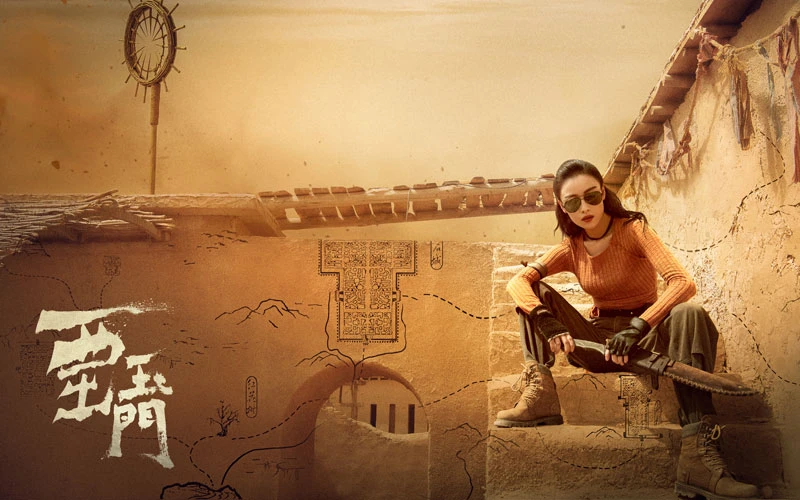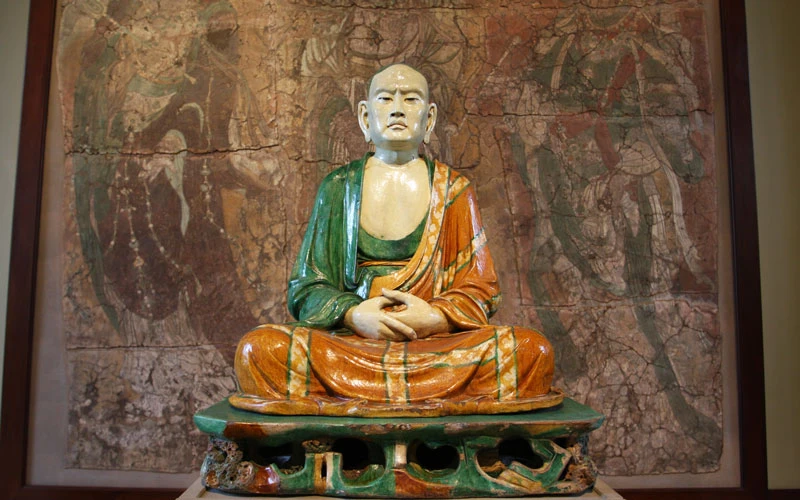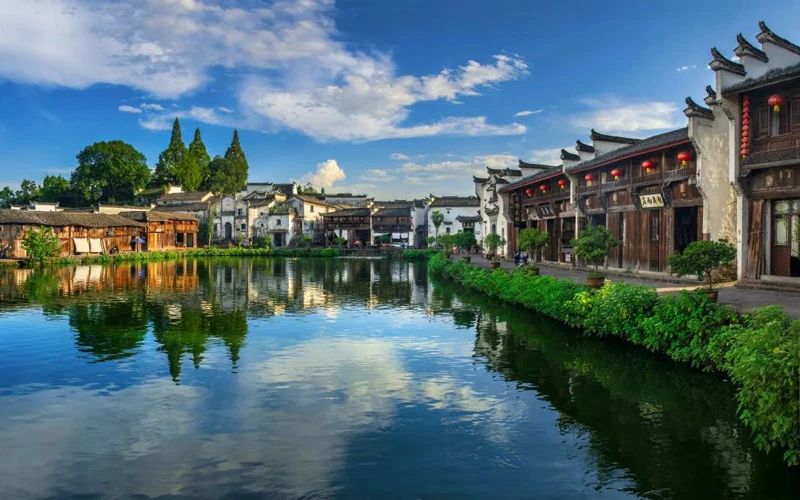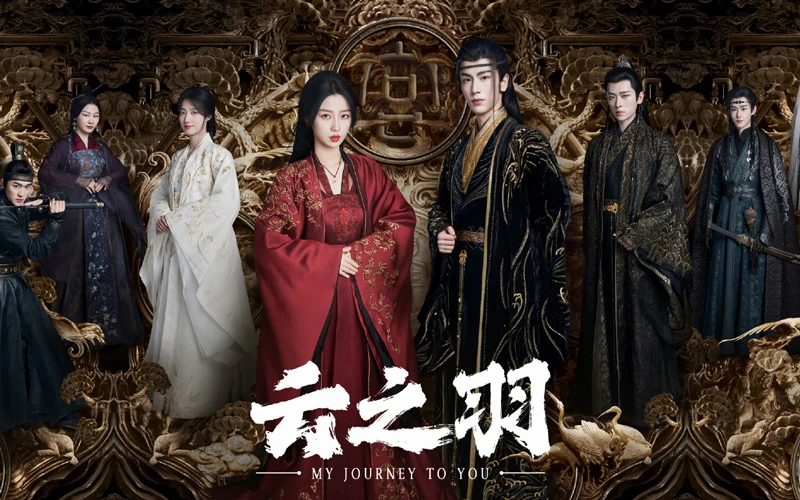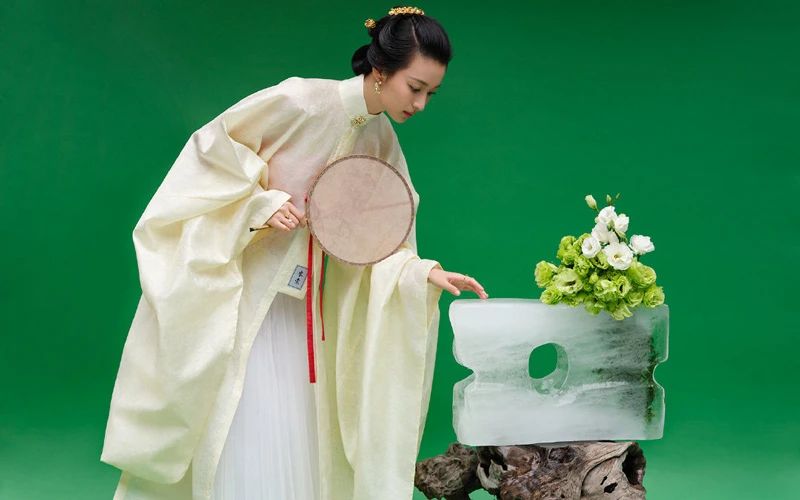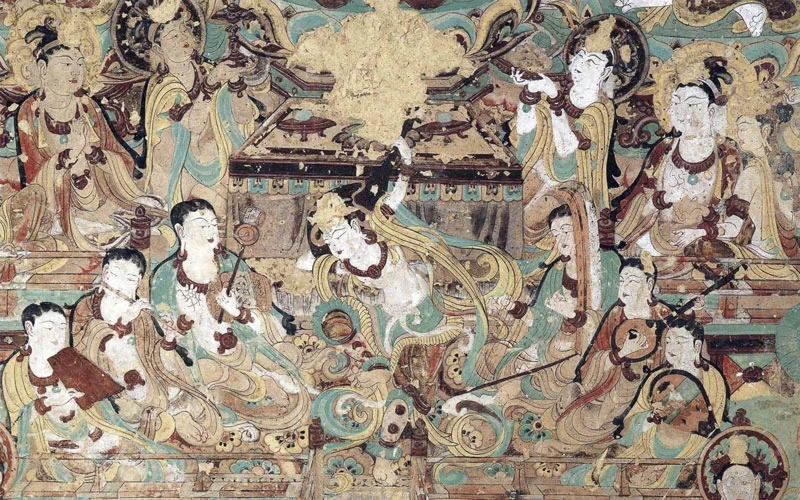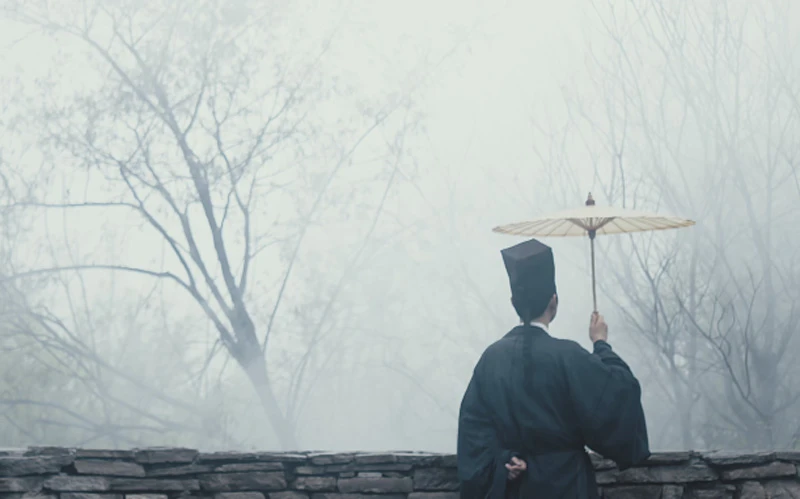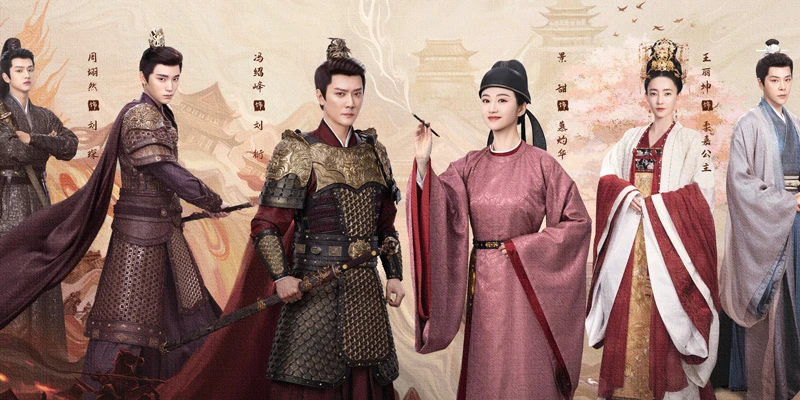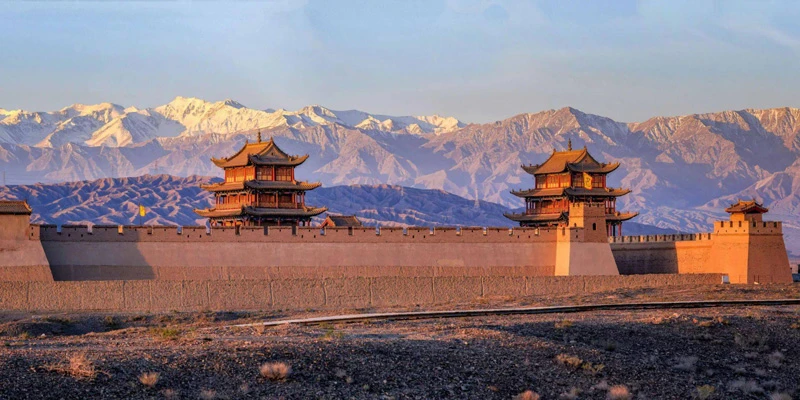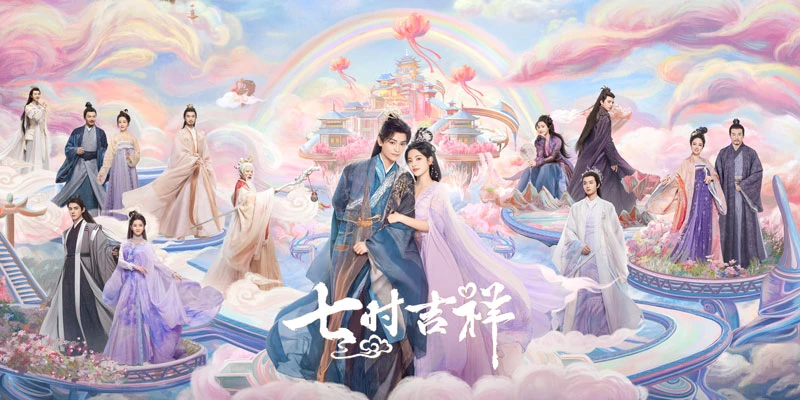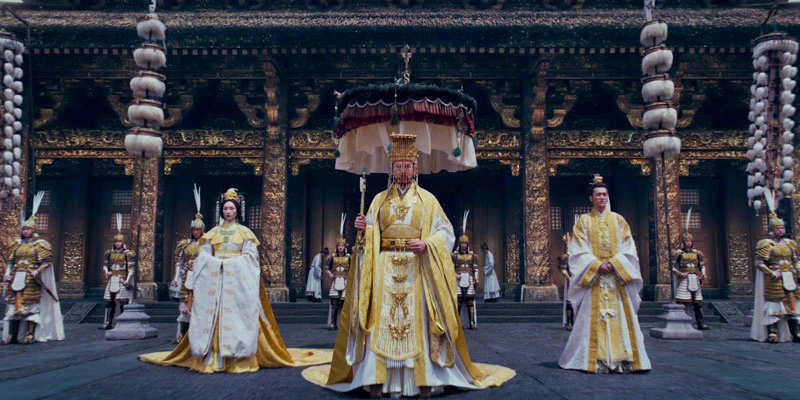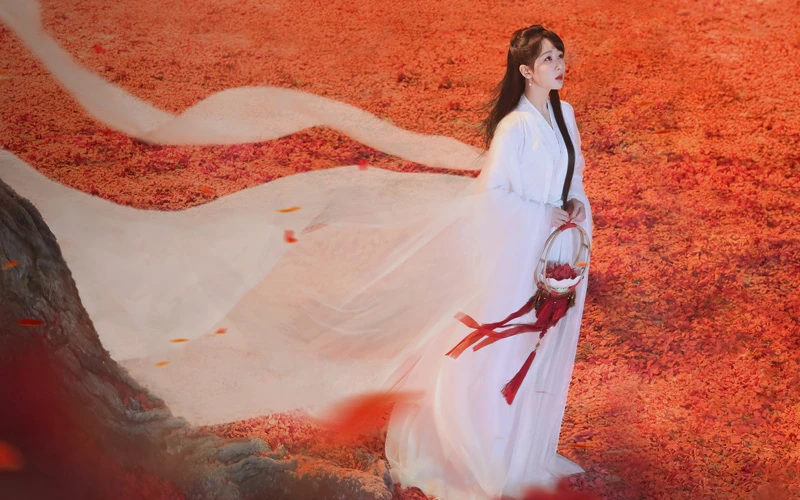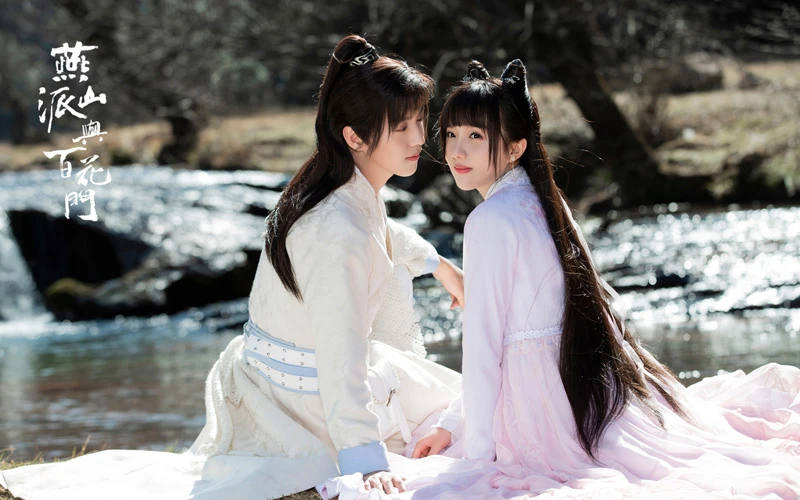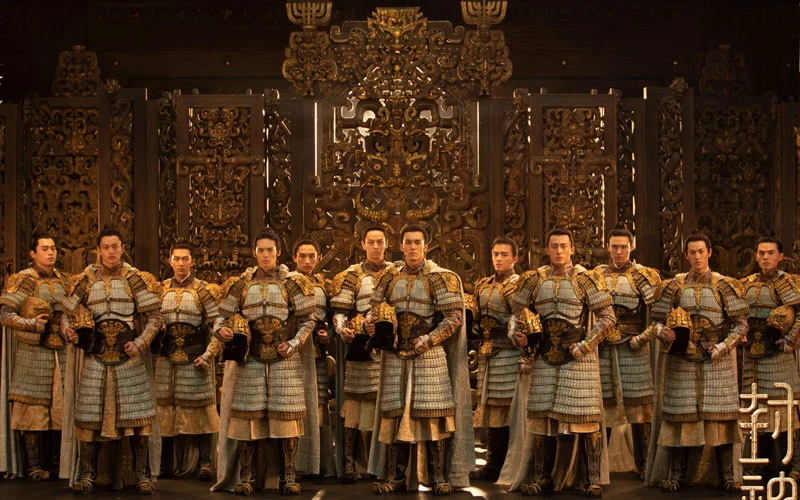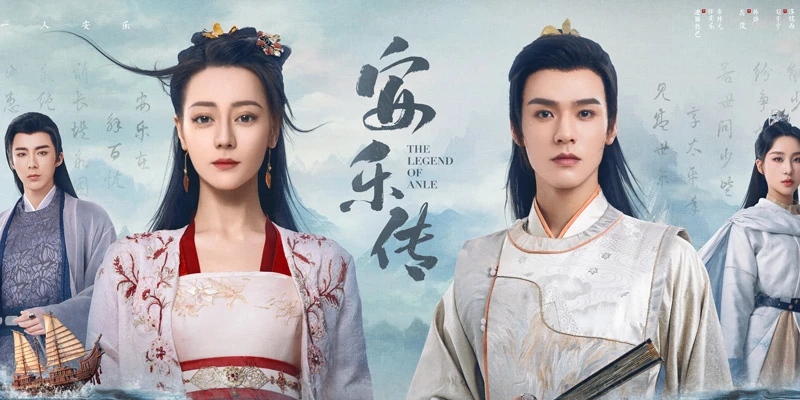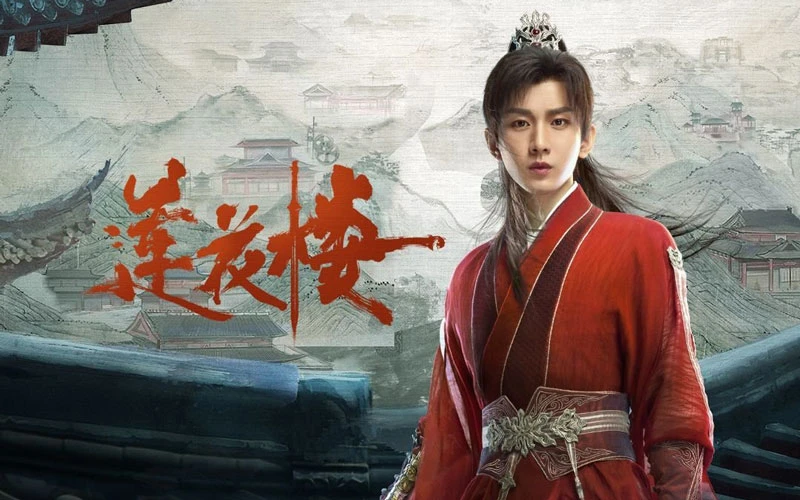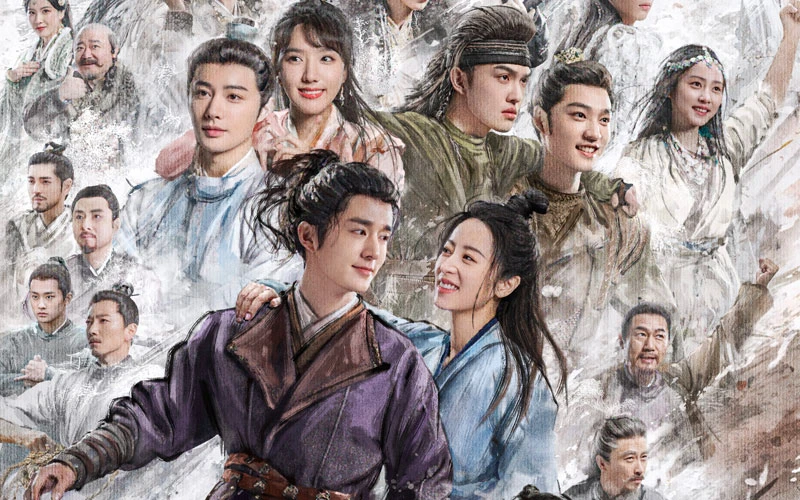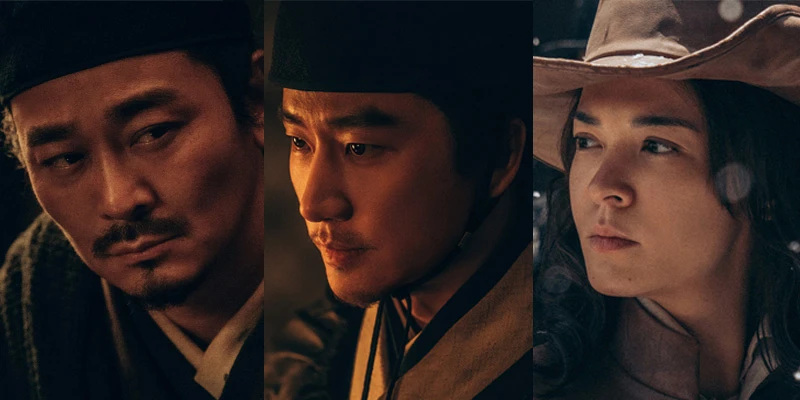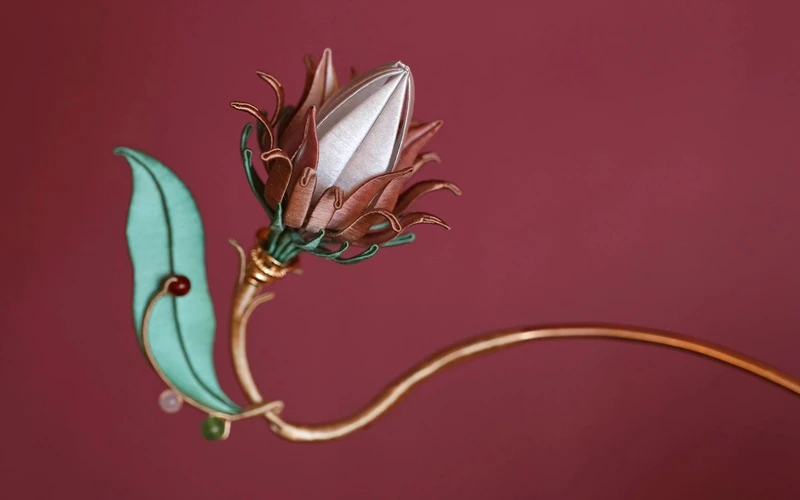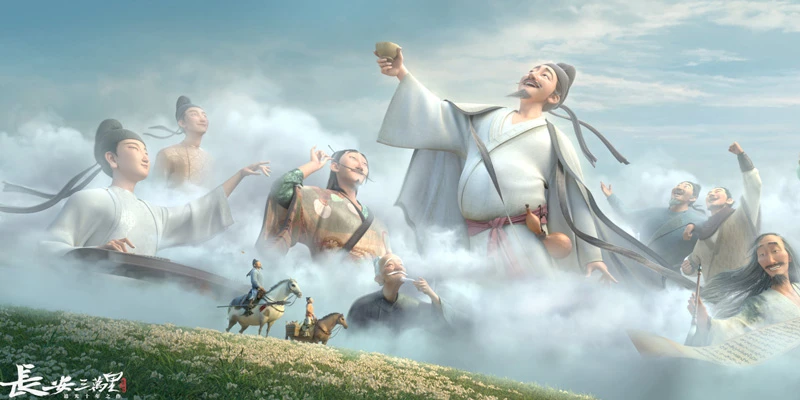Article
搜索结果:
-
Latest Fantasy Adventure Drama Parallel World: Epic Tales and Thrilling Quests
Directed by Su Zhaobin and Lin Ziping, with Ni Ni and Bai Yu as the leading actors, and Jin Han, Meng Ziyi, and Zhang Yishang making special appearances, the fantasy adventure cdrama "Parallel World (西出玉门)" is currently airing. The drama tell the story about Ye Liuxi and Chang Dong, one searching for the truth of their identity and the other unraveling the mysteries of the past, join forces to venture deep into the desert. In the depths of the desert, dangers lurk at every turn, as if invisible hands are pulling them into the the Jade Gate. Amidst various forces, they navigate through numerous troubles, unraveling the truth and gaining insights into true love through life-and-death trials. The truth seems within reach, but they also find themselves ensnared in a larger conspiracy. With its magnificent spectacle, unique visual style, tight pacing, and gripping storyline, the drama quickly captivates audiences of different ages and backgrounds. A contemporary fantasy that lands with finesse "Parallel World" is a fresh attempt at Chinese fantasy drama. In previous fantasy dramas, the fantastical elements were often derived from the convergence of the past and present or the turmoil of human hearts. "Parallel World" takes a… -
Exploring the Chinese Artifacts Treasures Mentioned in Escape from the British Museum
The short drama "Escape from the British Museum" has become popular. This three-episode short video series, co-created by online media personalities Jianbing Guozai and Xiatian Meimei, is the most anticipated work in the film and television industry recently. It not only generated a lot of buzz on major online platforms but also received recognition and encouragement from numerous media outlets. Using personification as a narrative technique, it tells a sophisticated story: a delicate Chinese jade pot escapes from the British Museum and encounters a Chinese journalist named Zhang Yong'an, who is working overseas. They then embark on a journey back home together, fulfilling the task entrusted to her by the Chinese artifacts in the British Museum. With a total duration of less than 20 minutes, despite the insufficient maturity of its production elements such as scenes and props, the storytelling logic is complete, the emotions are abundant and solid, and the conveyed values are positioned at a very high level. It serves as a low-cost, high-level Chinese short drama model. After the release of the final episode, it directly sparked an explosive wave of praise. Many netizens were deeply moved by the scene where overseas cultural relics read letters to… -
Hidden Gems of Jiangnan: Discovering the Allure of Zhuge Bagua Village - Enigmatic Anhui Architecture
The Three Kingdoms era was a legendary age. Although it lasted less than a hundred years in history, this period saw the emergence of heroes such as Cao Cao, Liu Bei, Sun Quan, Guan Yu, and Zhuge Liang. Their deeds have left a deep imprint on Chinese culture and are widely praised and celebrated. The three states of Wei, Shu, and Wu divided the country: Wei ruled the north, Shu occupied the southwest, and Wu held control over the south. Surprisingly enough, within what used to be territory belonging to Wu lies the largest settlement of Zhuge Liang's descendants in China today - an ancient village with a rich legendary character called Zhuge Bagua Village (诸葛八卦村). There are various mysterious rumors surrounding this village: thieves who entered were said to become lost in a maze-like formation and could only surrender; some say that it is an auspicious place blessed with good feng shui which has kept it prosperous for generations. What kind of ancient village is this exactly? Are these rumors true or false? Let us explore further. Resident of Bagua Village: Descendants of Zhuge Liang Zhuge Liang (诸葛亮) was one of the most outstanding politicians and military strategists in Chinese… -
My Journey to You: Newest Historical Wuxia Drama with Scheme and Spy
On September 2nd, the Jianghu scheme drama "My Journey to You" directed by Guo Jingming and starring Yu Shuxin, Zhang Linghe, and Cheng Lei, with special appearances by Zeng Shunxi, , and Chen Du Ling began airing. As the grand ceremony for selecting a consort approaches, Yun Weishan (played by Yu Shuxin), a skilled assassin, infiltrates the Gong Men sect to gather intelligence. However, unexpectedly both the master of the Gong Men and his designated successor are assassinated. Overnight, Gong Ziyu (played by Zhang Linghe), who has always been marginalized as the fourth prince suddenly becomes the new master of the Gong Men sect. In this twist of fate, Yun Weishan can only redirect her efforts towards capturing and seducing Gong Ziyu anew. After careful planning and manipulation she succeeds in becoming his bride. She had initially thought that once she became Gong Ziyu's wife she would complete her mission and attain freedom; little did she know that even more dangerous challenges awaited her. Her only ally being none other than Gong ZiYu himself who appeared to be an inept puppet ruler. With intricate reasoning consciousness intertwined with gripping plot tension, the mystery genre is becoming one of most significant… -
Stunning Hanfu Photography that Transports You into the Glamorous World of Ancient China
The hanfu culture is no longer just a celebration for a small group of people; an increasing number of ordinary individuals are now sharing their hanfu experiences through creative short videos, integrating hanfu into their daily lives. At the same time, the seemingly unrelated realms of hanfu and fashion have also begun to merge. Hanfu covers in fashion magazines have sparked discussions within the hanfu community, fashion circles, and academic circles alike. Among them, we can find replicas, traditional designs, and fusion styles of hanfu. Dongjin Shangyu has compiled a collection of fashionable magazine spreads featuring hanfu throughout the years for you. Hanfu in 2013 "FHM" Ten years ago, social networks were not as active as they are today. However, even at that time these three photos broke through the aesthetic norms of the hanfu community and even attracted attention from the media industry. One of these works was used as a cover photo in Issue 112 of "CHINESE HERITAGE" magazine. At that time, Yu Lingyuan was responsible for this photoshoot and said: "The structure of Western suits is similar to Western sculpture - it is very complex in terms of craftsmanship and has a three-dimensional quality. However, what… -
History of Flying Apsaras Art: Symbolism and Significance in Cultural Heritage
In the Wei, Jin, and North-South Dynasties, when Buddhism was first spread, the flying immortals in the murals were once called Fei Tian (飞天, flying apsaras). With the deep development of Buddhism in China, the Buddhist flying gods and flying immortals merged with each other in artistic images. Dunhuang Fei Tian is the flying apsaras painted in the Dunhuang caves, which later became a special term for Chinese Dunhuang mural art. 01 Origin of flying apsaras In Buddhist culture, the term "Tian" not only refers to celestial abodes but also to the deities within them, such as the "Gongde Tian," which represents auspicious heavenly maidens. Within the heavenly realm, there exists a category of minor deities who flit about and attend to various matters for the apsaras. They possess exceptional singing and dancing abilities, and whenever the Buddha expounds upon his teachings, they soar through the air in graceful dances while playing music and scattering flowers. This imagery actually originated from two minor deities in Brahmanism - Gandharvas and Apsaras. The former is associated with music while the latter embodies dance. The early translators aptly rendered these minor deities as "Fei Tian," denoting their ethereal nature of soaring through… -
Exploring the Chinese Documentary Eminent Figures Through the Ages and the Su Shi
In recent years, Chinese documentaries have brought us many surprises, such as "Once Upon a Bite," "Masters in The Forbidden City," and "The Flavor of History." These documentaries present various aspects of Chinese culture, including food, traditions, and customs. In this article, we will introduce a documentary series that explores ancient Chinese figures called "Qian Gu Feng Liu Ren Wu (千古风流人物, Eminent Figures Through the Ages)," with a focus on the latest season featuring the renowned figure Su Shi. Introducing of Eminent Figures Through the Ages The term "eminent figures" refers to individuals who have had significant influence during their time. Su Shi, Li Bai, Tao Yuanming, Bai Juyi, Ouyang Xiu, these great historical figures not only left behind monumental literary works but also provided guidance for generations of disheartened and confused individuals through their enlightened philosophies of life. Amidst the hardships and twists of fate in life's journey, we should learn from their attitudes, using broad-mindedness to transcend suffering and seizing beauty in our remaining days. These familiar names are given concrete depictions in this documentary series. They experienced joys and sorrows like ordinary people; they endured pain and disappointment just like anyone else. However, the challenges they… -
The Allure of The Legend of Zhuohua: Unforgettable Characters and Unbreakable Romance
Directed by Wendeguang, adapted from the novel "Ceng Feng Liu," starring Jing Tian and Feng Shaofeng, with Wang Likun, Zhou Yiran, Xu Haiqiao, and others in leading roles, the historical inspirational & romance drama "The Legend of Zhuohua" is currently airing. The story revolves around Mu Zhuohua, an ambitious female aspiring for success and fame. She crosses paths with Liu Yan, a warrior determined to seek justice on the battlefield and protect their comrades-in-arms. Their journey intertwines redemption and love as they unite to defend their homeland. The show has received relatively positive feedback for several reasons. Firstly, the popularity of Feng Shaofeng and Jing Tian as lead actors generated considerable anticipation among viewers when they were cast as a couple in this production. Secondly, the drama centers around female inspirational topics which have always resonated well with female audiences. Particularly noteworthy is Jing Tian's portrayal of Mu Zhuohua's character that has gained a loyal following due to her memorable lines and strong personality traits. Although set against a historical backdrop, these characters express contemporary women's aspirations. Women's empowerment dramas have always been an essential genre in Chinese drama productions - whether featuring strong female leads or ensemble casts centered… -
Exploring the History of China's Hexi Corridor: A Gateway to the Silk Road
The famous scenic spots in China are not only material existences, but also products of writing. The strokes of history and poetry give them meaning and provide us with a way to observe them. The Hexi Corridor is characterized by religious devotion, flourishing trade routes, and splendid culture. The Dream of Emperor Wu In 112 BC, Emperor Wu of the Han Dynasty, Liu Che at the age of 45 went on an inspection tour to the Yellow River bank in Jingyuan County, Gansu Province. This was his only time being so close to the Hexi Corridor. Although he never set foot on the Hexi Corridor during his lifetime, one can imagine that he must have had many magnificent dreams about it; dreams filled with vast Qilian Mountains and everlasting achievements. Beyond the Yellow River lies a corridor-like landform that gave birth to the most vivid name for this region - "Hexi Corridor". West of the Yellow River, shaped like a corridor, so the Qilian Mountains, Wuqiao Mountain and Longshou Mountain, Haili Mountain, Mazong Mountain, the vast land between the two mountains has the most graphic name "Hexi Corridor". Dozens of inland rivers originating from Qilian Mountains converge into major… -
Love You Seven Times: A Review of the Must-Watch Enchanting Romance Fantasy Drama
When you first watch the Xuanhuan drama "Love You Seven Times", the first thing that catches the eye is a dazzling mythical world, followed by a sudden shift to a jungle survival tale, and then swiftly transitioning into a childhood sweetheart love story. In just the first three episodes, the story smoothly switches between three perspectives, which is truly refreshing. According to the overall setting, there are also five distinct small worlds waiting to be deciphered in future episodes. "Love You Seven Times" constructs a fascinating and imaginative new worldview - the Colorful Cloud Myth Paradise. Building upon this foundation, it introduces an innovative concept of an infinite flow while maintaining an intense pure love configuration and skillfully laying out seven captivating romantic subplots. Based on the aired episodes, both the production quality and storytelling deserve recognition. The ability to turn wild fantasies into reality and cleverly convey positive views on love through its plot is enough proof of curiosity, imagination, and drive behind its creators. Infinite flow romantic subplots "Love You Seven Times" is adapted from Jiu Lu Fei Xiang's original novel "Yi Shi Chong Dong, Qi Shi Bu Xiang." It tells the story of Xiangyun (played by… -
Discovering the Magnificence of Yinxu - the Royal Site of the Shang Dynasty
The ancient mythological film "Creation of The Gods I: Kingdom of Storms," directed by Wuershan, is currently being enthusiastically screened. From the initial lack of confidence to now receiving numerous recommendations from audiences, the film's trend has been steadily rising against all odds. According to data, the film has already grossed over 1 billion RMB in box office revenue and received a high score of 7.8 from 230,000 users on Douban. These outstanding figures in terms of commercial production prove that the film is making a comeback based on word-of-mouth and clearly demonstrate strong audience recognition and high expectations for sequels. In addition to its innovative plot and characters, the film's depiction of the atmosphere during the Shang Dynasty is truly exquisite. Historical details such as turtle shell rituals and dazzling bronze artifacts not only pique people's curiosity about this ancient dynasty but also showcase remarkable craftsmanship. If you wish to explore Shang dynasty culture and related archaeological sites, then understanding Yinxu (殷墟) is essential. Yinxu was once the capital city site during the late Shang Dynasty in China. It is located on both banks of Huai River in northwest suburbs of Anyang City, Henan Province. Centered around Xiaotun Village,… -
Exploring the Buzz around Lost You Forever - Hottest Fantasy Romance Drama in 2023
The costume fantasy drama "Lost You Forever", written by Tonghua and directed by Qin Zhen and Yang Huan, starring Yang Zi, Zhang Wanyi, Deng Wei, Dai Luwa, and Wang Hongyi, has come to an end on Tencent Video. A tumultuous journey of watching the drama has thus concluded. For a wonderful drama like "Lost You Forever", the audience never stops urging for more updates. The speed at which it is aired is often very fast; twenty days of binge-watching quickly pass by. However, the longing and reminiscence in the hearts of the viewers are also enduring feelings that stretch like vast mountains and rivers. From today onwards, Xiaoyao's yearning bids farewell temporarily while the viewers' yearning has just begun. What viewers yearn for is Xiaoyao (played by Yang Zi), who embodies their ideal image of a female protagonist; it is the different emotional patterns between the female lead and Cang Xuan (played by Zhang Wanyi), Tushan Jing (played by Deng Wei), Xiangliu (played by Tan Jianci), Chishui Fenglong (played by Wang Hongyi), which stimulate their imagination about intimate relationships; it is also the authentic plotline with highly unified production aesthetics that evoke fascination with Chinese bad ending style. Undoubtedly, "Lost… -
Love Forever Young: A Hilarious Martial Arts Comedy
The romantic Wuxia drama "Love Forever Young," starring Fang Yilun, Liu Lingzi, Ma Wenyuan, Su Xiaotong, Feng Mingchao, and Dai Yanni, is currently airing. Adapted from a manga of the same name, the drama tells the story of two martial arts sects that have been feuding over territory for three generations but end up entangled in a tale of love and hate. Despite lacking well-known celebrities or extensive publicity, the drama has gained some recognition since its release. The production studio Xin Sheng Tang's previous dramas like "Chef Fang" and "Chef Hua" share a similar style with this series - no high-profile stars or dramatic plot twists. However, they all bring forth a refreshing breeze through their focus on companionship within the daily life genre of costume dramas. Different from traditional wuxia dramas, "Love Forever Young" sets itself apart by presenting an enjoyable and absurd narrative about the enmity between the two factions despite informing viewers from the start about their three-generation conflict. The interesting and lively young heroes as well as mysterious ancestors who seemingly complicate relationships add to audience interest. Furthermore, relying on a talented production team ensures sincerity throughout every aspect of costume design to real-life shooting… -
How Creation of the Gods' Scenery and Costumes Were Designed
A film of such magnificence and grandeur, "Creation of The Gods I: Kingdom of Storms" has been in preparation for nearly 10 years, finally makes its way to the audience. The whole crew is inevitably filled with apprehension. As a master of oriental aesthetics, Ye Jintian (Timmy Yip) has previously designed costumes for numerous films and TV productions such as "A Better Tomorrow," "Rouge," "The Banquet," and "Red Cliff." In 2001, he won the Academy Award for Best Art Direction for his work on "Crouching Tiger, Hidden Dragon," becoming the first and only Chinese person to receive this honor. However, when Ye Jintian took on the role of art design director for the Creation of The Gods movie, it was an unprecedented challenge for him. It is the largest project in terms of workload and scale that Ye Jintian has ever encountered. With over 200 members in the art team and a set covering 500 acres, Ye Jintian designed more than 120 scenes and thousands of costumes. From the magical city of Zhaoge to the ancient kingdom of Xiqi, from primeval forests to Kunlun's fairyland; from King Zhou with his martial prowess to Daji with her enchanting beauty; from mythical… -
Exploring the Character Ensembles in Chinese Dramas - From Classic Tropes to Modern Complexity
The recently premiered costume drama "Lost You Forever" starring popular actress Yang Zi, along with actors Zhang Wanyi, Deng Wei, and Tan Jianci, tells a mythical story about family ties, love, and friendship. And the romantic costume drama "Legend of Anle," starring Dilraba Dilmurat and Gong Jun, depicts their journey of protecting their home and country for the well-being of the people. With the development of the film and television industry, character designs and relationship configurations in various genres of dramas have also changed accordingly. Therefore, observing the changes in the arrangement of characters on screen can serve as a window to observe industry trends and reflect the public's aesthetic evolution. Creators who target emerging trends can seize opportunities. Upgrading character combinations within familiar patterns becomes one of the key aspects of TV drama evolution. Matching characters with themes "Lost You Forever" has quickly gained popularity due to its fresh combination of one female protagonist paired with three male characters. Adapted from a novel by Tong Hua, it revolves around Xiao Yao (played by Yang Zi) as she navigates her destined path while entangled in a complex relationship of emotional relationships. She has childhood friend Cang Xuan; shares a… -
Mysterious Lotus Casebook: A Riveting Fusion of Martial Arts and Mystery in a Gripping Drama
Currently, "Mysterious Lotus Casebook" is being aired in a landscape where martial arts dramas show some signs of improvement and mystery genres are booming. From the perspective of a Wuxia drama, "Mysterious Lotus Casebook" is filled with the essence of the martial world in its plot and story background. From the viewpoint of a mystery drama, each episode interconnects seamlessly, with a tightly-paced storyline and plenty of comedic moments that generate high levels of interest and public discussion. However, precisely because it has gained considerable popularity, its distinct characteristics have made it harder for this fusion between Wuxia and suspense genres to blend harmoniously. Since its premiere, "Mysterious Lotus Casebook" has sparked ongoing debates about which category it belongs to. Upon closer observation, certain aspects such as the overall story structure, character relationships, factional struggles within martial arts sects, and enigmatic case investigations appear overly straightforward or even somewhat misguided. An orderly obsession From its content perspective, "Mysterious Lotus Casebook" is a costume mystery drama with elements of martial arts woven into it. The mysteries presented in each episode all stem from conflicts within the martial world rather than focusing on chivalry alone; instead they emphasize the intricate dynamics… -
Young Blood Season 2: New Adventures for the Intrepid Hero
"Young Blood Season 2" premiered on July 29th, 2023, with main cast includes Zhang Xincheng, Zhou Yutong, Wang Youshuo, Su Xiaotong, Zheng Wei, Fu Weilun, and others. After a four-year hiatus, "Young Blood Season 2" has arrived as scheduled with the original team behind its creation. What's different this time is that Wang Juan not only served as the script planner but also personally took on the role of screenwriter. Such sincerity undoubtedly raises high expectations among viewers for a new round of plot developments. The second season continues the storyline and character settings from the first season. Set during the Qingli period in the Northern Song Dynasty era when young spies were trained in the Secret Pavilion by the Bureau of Military Affairs, it revolves around six intelligent and resourceful youths: Yuan Zhongxin who possesses great wisdom; Zhao Jian who combines beauty with quick-wittedness; Xiao Jing who refuses to take lives; Wang Kuan who never tells lies; Xue Ying who prefers solitude; and Wei Ya Nei (Wei Yuan) who has an outgoing personality, together they form Qi Zhai. After going through numerous life-and-death trials, they experience personal growth while remaining united and loyal to their country. In the first… -
Previewing The Mutations: Gripping Narrative of Latest Thriller Cdrama
Chinese drama market has recently been bustling. On the one hand, the highly anticipated drama "Lost You Forever" quickly soared to the top of the popularity charts after its premiere, and its viewership ratings have also been steadily climbing. On the other hand, the beloved spy drama "The Infiltrator" has also caused a sensation and sparked continuous discussions. There is no denying that this year's summer lineup of dramas is indeed abundant, bringing countless highlights and topics for viewers. Furthermore, it has been reported that the ancient costume suspense drama "The Mutations" is about to be released. From both its storyline and production team to its cast members, it is undoubtedly stands as a highly anticipated hit series. Adapted from Ma Boyong's novel of the same name, it tells the story set in Tianqi period at the end of Ming Dynasty when a strange epidemic breaks out outside Liaodong Pass, plunging people into panic. A member of Jin Yi Wei (Embroidered Uniform Guard) goes alone to investigate in northern but becomes entangled in conflicts between local military forces and civilians. Eventually, this Jin Yi Wei gradually unravels a tale woven with political intrigues. The biggest highlight of this drama lies… -
Hanfu Accessory: Wrapped Flower History and Chan Hua Basic DIY Steps
Vocab of Wrapped Flower Wrapped flower - 缠花 (chán huā) - a name used to called artificially made flower using the techniques of wrapping colored silk thread around cut-out pieces and combining each parts together to make flowers, animals, insects, etc. Spring Flower - 春仔花 (chūn zǐ huā) or 春花 (chūn huā). Used in this situation would mean various types of flower combined into a small batch each flower symbolize for different meanings in China. In this case, the flower would be a wrapped flower rather than a real flower. History of Wrapped Flower Through ancient China, people held a profound appreciation for nature, which manifested in their beliefs of deities who governed natural forces to their interest in making poetry, music, and artworks that represented the beauty they saw. One remarkable custom in ancient China were the flower hair-pinning practice known as "簪花的习俗 (zān huā de xí sú)," where both men and women adorned their hair or hat with flowers, either fresh or artificially made. Talking about flowers, there are many artificial flower craftsmen that have passed down for centuries, including "ronghua" and "wrapped flower." The art of wrapped flowers originated during the Ming Dynasty and arrived in the… -
A Fashion Journey Through Chang An: Exquisite Hanfu Traditional Motifs in the Movie
The animated historical film "Chang An," produced by Light Chaser Animation Studios and directed by Xie Junwei and Zou Jing, was released on July 8, 2023. Set against the backdrop of the prosperous Tang Dynasty, the film depicts the chaos that engulfed Chang'an after the An Lushan Rebellion. In this tumultuous time, Gao Shi reminisces about his past with Li Bai. What makes this film remarkable is not only its portrayal of a realistic and captivating Li Bai but also its presentation of the poignant stories between Li Bai and Gao Shi throughout their lives. It showcases their encounters with other prominent figures of the Tang Dynasty such as Du Fu and Wang Wei, capturing the splendorous era they lived in and showcasing the infinite charm of poetry and culture. Recently sparked heated discussions among netizens after its release. The film showcases the charm of Eastern aesthetics, allowing viewers to travel through time and experience the splendorous Tang Dynasty. In addition to the essence of Tang style emanating from poetry, the intricate motifs on the characters' costumes in the film also reveal the beauty of lines within China's long historical river. Patterns, simply put, refer to decorative designs. Ancient people drew…
